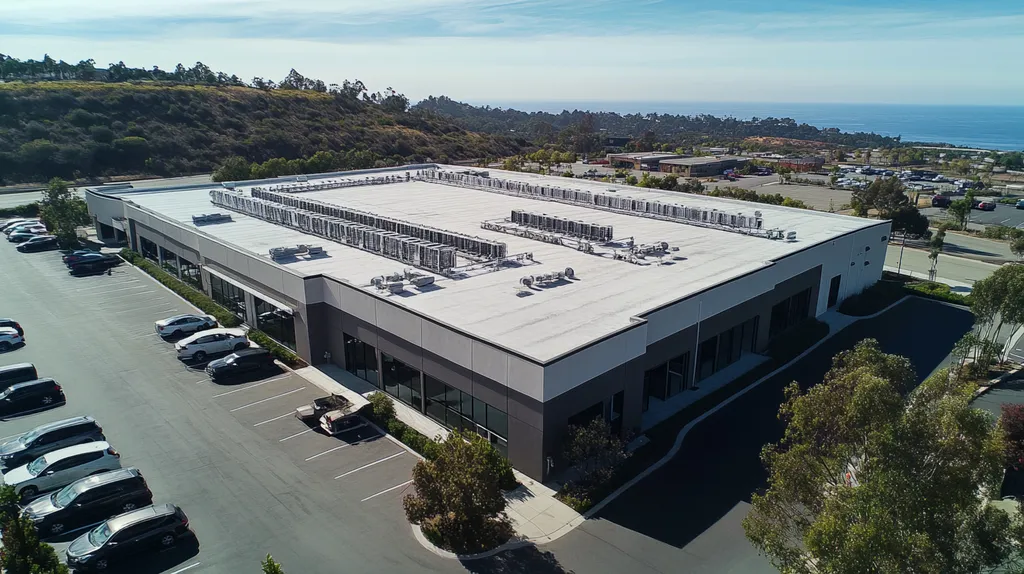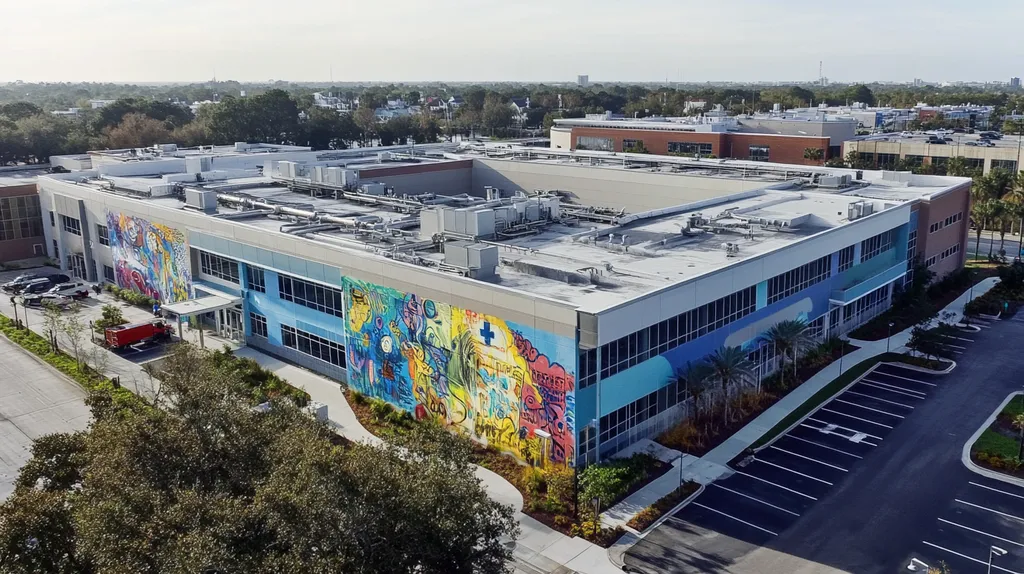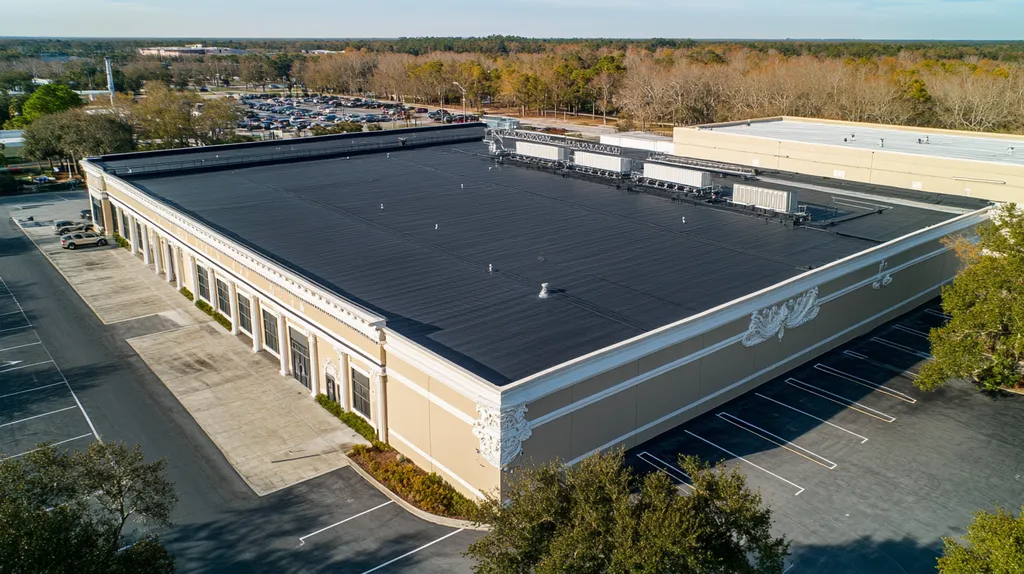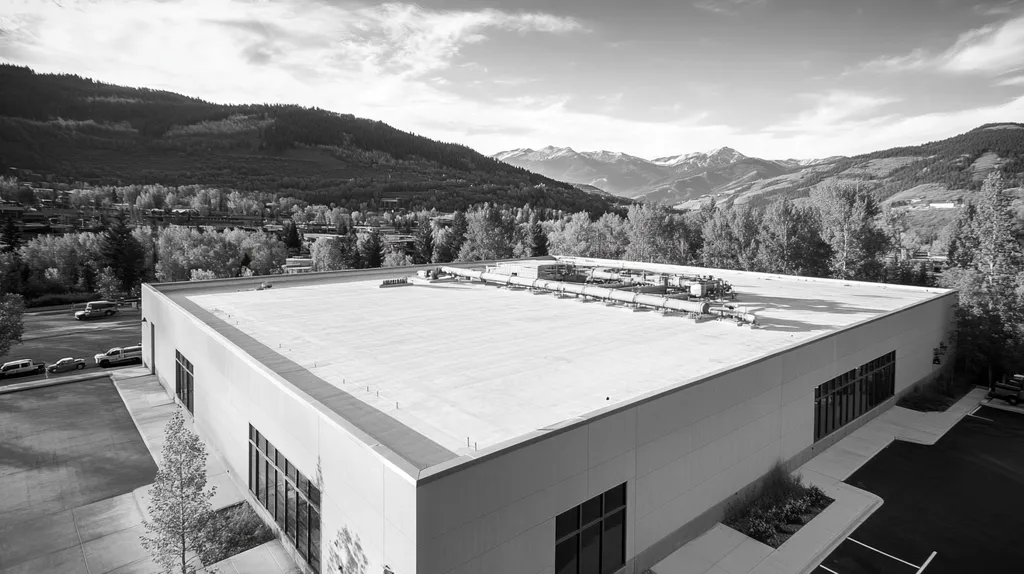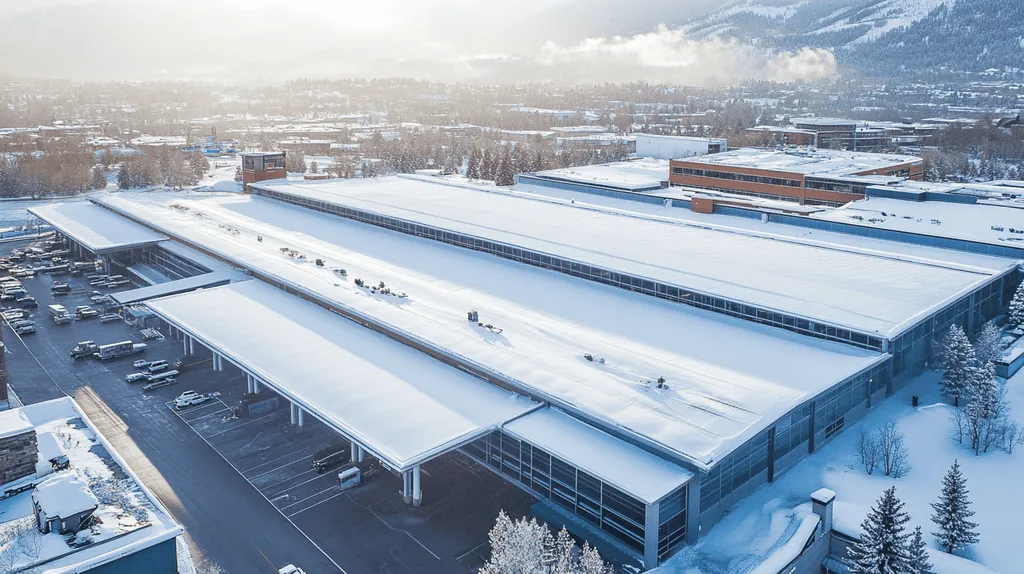In today’s industrial facilities, lighting costs can consume up to 40% of total energy expenditure, making integrated roof lighting solutions more critical than ever. With energy prices continuing to rise, facility managers need comprehensive strategies to maximize natural light while minimizing costs.
Modern integrated lighting technologies can reduce lighting-related energy consumption by 50-75% while improving worker productivity and safety. However, selecting and implementing the right solution requires careful consideration of multiple factors.
This comprehensive guide explores everything facility managers need to know about integrated industrial roof lighting, from fundamental concepts to optimization strategies that ensure long-term performance.
SECTION 1: FUNDAMENTAL CONCEPTS
In today’s energy-conscious world, integrating efficient lighting solutions into industrial roofs is essential. Buildings consume nearly 40% of the energy used in the U.S., according to the Department of Energy. As energy costs rise and sustainability takes center stage, property owners need smart, effective solutions. This section will delve into the advantages of natural lighting, various types of skylights and daylighting systems, and how prioritizing energy efficiency can lead to significant long-term savings.
Benefits of Natural Lighting
Natural lighting provides numerous benefits that go far beyond merely enhancing a building’s appearance. Research shows that when workers have access to natural light, they experience higher levels of focus and improved morale, which can lead to increased productivity.
Additionally, implementing natural light solutions significantly reduces the need for artificial lighting during the day. This shift can result in energy savings of up to 50% for businesses equipped with strategically designed skylights.
Beyond energy savings, natural light plays a critical role in employee health by aiding in Vitamin D production and regulating circadian rhythms. Healthier employees contribute to a more dynamic and productive workplace.
By prioritizing the integration of natural light, property owners can create environments that foster efficiency, well-being, and enjoyment for all occupants.
Types of Skylights and Daylighting Systems
Skylights are essential elements of integrated lighting systems and come in a range of styles. Fixed skylights allow generous daylight to pour in without compromising energy efficiency, while vented skylights serve the dual purpose of enhancing ventilation alongside natural lighting.
For spaces where traditional skylights may not be feasible, tubular skylights utilize reflective tubes to divert daylight into interior areas, ensuring spaces remain well-lit.
Moreover, innovative daylighting systems, including light tubes and shading devices, maximize sunlight utilization while minimizing glare and excess heat. These modern strategies allow buildings to harness natural light effectively while maintaining a comfortable environment.
Choosing the right skylight or daylighting system can dramatically boost energy efficiency and enhance overall operational performance.
Energy Efficiency and Sustainability
Energy efficiency is crucial for industrial facilities aiming to improve sustainability efforts. Integrated lighting solutions harness natural light to lower energy consumption, directly impacting operational costs.
By combining energy-efficient lighting technologies, such as LED systems with natural daylight, businesses can significantly reduce their carbon footprints. This aligns with broader sustainability objectives and positions companies as leaders in eco-friendly practices.
Furthermore, implementing energy-efficient measures often opens the door to government incentives and green building certifications. This not only enhances a company’s brand reputation but can also provide financial benefits.
Emphasizing energy efficiency through integrated lighting solutions is not just a trend; it is a strategic step for property owners committed to long-term sustainability and operational viability.
SECTION 2: SYSTEM COMPONENTS
In the quest for effective integrated lighting solutions on industrial roofs, the choice of system components is paramount. The right materials not only boost energy efficiency but also enhance safety and productivity in the workplace. The U.S. Department of Energy reports that implementing daylighting strategies can cut energy expenses by as much as 40%. Understanding the essential materials and systems involved is crucial for making decisions that serve both the environment and your financial bottom line.
Materials Used in Industrial Skylights
The performance and longevity of industrial skylights largely depend on the materials used. Common choices include acrylic, polycarbonate, and glass, each offering unique advantages. For instance, acrylic skylights are lightweight and provide excellent resistance to UV rays, making them ideal for many applications.
On the other hand, polycarbonate options boast superior impact resistance, ensuring they can withstand harsh weather conditions. Glass skylights, while typically heavier, provide outstanding aesthetics and thermal insulation benefits that can further enhance energy efficiency.
Selecting the appropriate material is vital; it influences not only how long the skylight will last but also how effectively it contributes to the roof’s energy efficiency. Moreover, using advanced thermal barriers alongside these materials can amplify energy savings even further.
Ultimately, making informed choices about materials significantly impacts the success of integrated lighting solutions, enabling industrial facilities to maximize their reliance on natural light.
Daylighting System Components
A well-designed daylighting system is composed of various components that function synergistically to optimize natural light usage. Key elements include skylights, light tubes, and reflective surfaces, which each play a critical role. Skylights admit large volumes of light into the space, while light tubes channel sunlight into areas that may otherwise remain dim.
Reflective surfaces are strategically positioned to direct light more efficiently throughout the workspace. This harmonious integration allows facilities to enjoy maximum natural illumination, which reduces dependence on artificial lighting.
Additionally, incorporating automated controls can enhance the system’s overall effectiveness. By adjusting artificial lighting levels based on the availability of natural light, these controls help maintain a consistent, comfortable environment throughout the day.
Investing in modern daylighting components not only decreases energy expenditures but also boosts employee well-being through improved ambient lighting, creating a more inviting workplace.
Compatible Roofing Types and Structures
Not all roofing systems readily accommodate integrated lighting solutions. Generally, flat roofs are more suited for skylight installations compared to sloped roofs, primarily due to design considerations like structural support and effective drainage.
Furthermore, the roofing materials significantly affect the integration of daylighting technologies. For example, single-ply membrane roofs typically allow for easier skylight implementation than built-up roofing systems.
Understanding the intricacies of the roof’s structure is essential when planning for integrated lighting. Roof configurations that promote ample access to natural light facilitate effective daylighting solutions, leading to enhanced illumination.
Ultimately, thoroughly evaluating roofing compatibility and making knowledgeable choices will pave the way for successful integration of lighting systems, offering both energy savings and better working conditions.
SECTION 3: IMPLEMENTATION METHODS
Implementing integrated lighting solutions for industrial roofs requires careful planning and strategic execution. As energy efficiency and safety are paramount, property owners must focus on the complexities involved in system design and installation. Poorly designed industrial lighting can increase operational expenses significantly, ultimately impacting a facility’s profitability. Tailoring solutions to each roof’s unique characteristics is essential to ensure optimal performance and cost savings.
Initial Consultation and Assessment
The journey toward effective integrated lighting begins with a comprehensive consultation and assessment. During this essential first meeting, property owners have the opportunity to discuss their specific lighting needs and address any unique concerns they may have.
Experienced professionals will conduct thorough evaluations of the roof structure, current lighting conditions, and energy usage patterns. This typically involves an on-site visit, allowing technicians to pinpoint challenges such as obstacles for light access, including existing solar panels or obstructions on the roof.
The assessment also examines local codes and regulations to ensure compliance with safety standards. Proper documentation during this stage lays the groundwork for a customized lighting solution that aligns with both the facility’s requirements and local laws.
By taking the time to assess all aspects, property owners enhance the chances of a successful installation, setting the stage for improved operational efficiency and energy savings.
Custom Design and Planning
Once the assessment is complete, the next step involves custom design and planning tailored to the facility. This phase emphasizes collaboration with architects and lighting engineers to create an efficient lighting design that complements the roof’s architecture.
Special attention is given to selecting energy-efficient fixtures, like LED systems, which can reduce energy costs by up to 60% compared to traditional options. Such decisions not only enhance sustainability but also contribute to significant long-term savings.
The design considers the specific activities within the facility. For instance, high-bay storage areas might need different lighting configurations than office spaces. Avoiding gaps in lighting coverage is crucial for ensuring safety and productivity.
Incorporating smart technology can also bolster system efficiency. Automated sensors can adjust lighting based on occupancy levels or the availability of natural light, ensuring that energy is consumed only when needed.
Professional Installation Procedures
With a solid design plan in place, professional installation is the next critical step. This phase ensures that integrated lighting systems function as designed while adhering to safety standards. Experienced roofing technicians typically handle the installation, focusing on avoiding common pitfalls that could otherwise compromise performance.
This process includes retrofitting existing fixtures and installing new lights appropriate for the specific roofing environment. All components must be weatherproofed, particularly in locations prone to extreme weather conditions, ensuring long-lasting performance.
After installation, rigorous testing confirms that all lighting meets design specifications and operates effectively. Any necessary adjustments can be made at this stage to maximize overall performance.
Finally, a walkthrough with facility managers helps ensure everyone understands the new system. This promotes not only safety but also enhances productivity through improved lighting solutions throughout the workspace.
SECTION 4: MAINTENANCE REQUIREMENTS
Proactive maintenance is critical for ensuring that integrated lighting solutions on industrial roofs operate efficiently and safely. Neglecting regular checks can lead to increased energy costs and safety risks, with studies indicating that poorly maintained systems can shorten their lifespan by up to 30%. By implementing a consistent maintenance routine, property owners can achieve optimal performance and avoid costly repairs. This section delves into essential maintenance checks, cleaning guidelines, and effective repair strategies that safeguard your investment.
Regular Maintenance Checks
Establishing a routine for maintenance checks is vital to prolonging the life of integrated lighting systems. Property owners should plan to conduct these inspections at least twice a year, ideally just before the winter and summer seasons. This proactive approach allows for early detection of issues such as loose fixtures or damaged wiring.
During these evaluations, facility managers should thoroughly inspect both the roofing and lighting installations. Look out for signs of wear or corrosion, particularly in vulnerable areas like junction boxes, where moisture can compromise electrical components. Catching these problems early prevents more severe electrical failures down the road.
Documenting maintenance activities in a logbook can provide valuable insights over time. This consistent record-keeping helps track issues, interventions, and future resource allocation for repairs. By prioritizing routine inspections, property owners enhance safety and boost energy efficiency within their facilities.
Cleaning and Inspection Guidelines
To ensure optimal lighting performance, maintaining clean fixtures and roofs is essential. Accumulated dust, debris, and biological growth can obstruct light, significantly reducing efficiency—sometimes by as much as 25%. Therefore, establishing a cleaning schedule should occur at least four times a year, allowing for seasonal adjustments.
When cleaning, use equipment and solutions that are safe for roofing materials and fixtures. Soft brushes, gentle detergents, and non-abrasive methods effectively remove dirt without causing damage. In cases of heavy grime, pressure washing may be useful, but precautions must be taken to safeguard electrical components.
After every cleaning session, a thorough inspection should follow. Check for signs of damage to the roof or fixtures and look for any new growths or blockages. Keeping the roof and lighting clean minimizes long-term issues and helps maintain high safety standards throughout the facility.
Repair and Replacement Strategies
Establishing a clear strategy for repairs and replacements is essential for maintaining the integrity of integrated lighting systems. When issues arise, prompt action is vital, as delaying repairs often leads to additional damage and higher expenses later on.
Focus first on safety-related concerns, such as faulty fixtures, followed by any performance issues. When replacing parts, ensure they match the original specifications to guarantee compatibility. This attention to detail helps sustain the system’s integrity and effectiveness.
Having a contingency plan for unexpected failures can streamline the replacement process. Maintain a list of reliable suppliers and contactors to minimize downtime. Additionally, investing in quality materials can reduce the frequency of replacements, leading to long-term savings.
By implementing effective repair and replacement strategies, property owners safeguard the functionality and safety of their integrated lighting systems, promoting compliance with industry standards and enhancing overall building performance.
SECTION 5: PERFORMANCE METRICS
In the push for greater efficiency and sustainability, integrated lighting solutions on industrial roofs have become essential. Not only do they enhance safety, but they also provide significant energy savings. For instance, facilities that adopt LED fixtures can cut energy costs by as much as 70%. By understanding key performance metrics, property owners and facility managers can fully leverage these advantages. This section will explore the critical aspects of energy cost reduction, lighting efficiency, and the impact on indoor temperatures and comfort.
Energy Cost Reduction Analysis
Evaluating energy costs is a crucial step in assessing the value of integrated lighting solutions. Facilities that transition to energy-efficient systems often see noticeable reductions in electricity bills and maintenance expenses. For example, a warehouse using solar-integrated lighting can save thousands of dollars each year.
Switching to LED lighting not only conserves energy but also minimizes heat output, reducing air conditioning demands. This dual benefit can lead to substantial savings across multiple areas of operation.
Additionally, many states offer incentives and rebates for facilities that upgrade to energy-efficient systems, enhancing the return on investment (ROI). Conducting a thorough audit allows facilities managers to uncover the full potential for savings through effective lighting integration.
In summary, energy cost reduction stands as a key performance metric that significantly impacts operational budgets. Tracking energy consumption before and after implementation offers valuable insights into the success of these initiatives.
Lighting Efficiency and Illumination Levels
Assessing lighting efficiency is directly tied to workplace productivity. Efficient lighting systems produce higher lumens per watt, meaning more light is generated for less energy consumed. Different industrial tasks require varying illumination levels; for instance, high bay areas might need around 500 lux, whereas assembly lines may only require 300 lux.
Employing tools like light meters enables facility managers to gauge existing lighting against industry benchmarks. By upgrading underperforming systems or making necessary adjustments, safety improves, accidents decrease, and employee morale rises.
Moreover, incorporating smart lighting controls that adapt based on occupancy and natural light can further boost efficiency. Implementing these innovations improves overall lighting quality and facilitates significant long-term savings.
Regular monitoring and adjustment of illumination levels ensures that integrated lighting solutions deliver maximum impact and measurable benefits.
Impact on Indoor Temperatures and Comfort
Integrated lighting solutions significantly influence indoor temperatures and comfort in industrial environments. Traditional lighting systems often produce excess heat, raising indoor temperatures and increasing cooling demands. Transitioning to LED or other energy-efficient lighting can greatly reduce this heat output.
Lower indoor temperatures not only lead to energy savings but also create a more comfortable work environment, enhancing employee focus and productivity. Research indicates that comfortable settings can improve overall output.
Furthermore, many contemporary lighting solutions include features like daylight harvesting. This technique utilizes natural light to complement artificial lighting, helping maintain optimal temperatures and further decrease energy consumption.
Examining how integrated lighting designs influence indoor climates is crucial for effective facility planning. Strategic management of temperature through well-designed lighting installations can foster healthier and more conducive working conditions.
SECTION 5: PERFORMANCE METRICS
As industries pursue greater efficiency and sustainability, integrated lighting solutions for industrial roofs have become increasingly vital. These systems not only enhance safety but also provide substantial energy savings. For example, facilities that implement LED fixtures can slash their energy costs by up to 70%. Grasping the performance metrics associated with these solutions is essential for maximizing benefits. This section will delve into energy cost reductions, lighting efficiency, and the influence on indoor temperatures and comfort.
Energy Cost Reduction Analysis
Analyzing energy costs is a crucial consideration in evaluating the effectiveness of integrated lighting solutions. Facilities that upgrade to energy-efficient systems frequently experience significant decreases in electricity bills and maintenance costs. For instance, a warehouse utilizing solar-integrated lighting can achieve savings of thousands of dollars each year.
Switching to LED lighting not only curtails energy consumption but also lowers heat output, thereby reducing air conditioning demands. This double advantage compounds financial savings across various operational areas.
Additionally, many states offer incentives and rebates for upgrading to energy-efficient systems, positively impacting return on investment (ROI). A comprehensive audit performed by facilities managers can uncover the full potential for cost savings through effective lighting integration.
In summary, energy cost reduction serves as a pivotal performance metric that significantly affects operational budgets. Tracking energy usage before and after implementation will yield essential insights into the success of these initiatives.
Lighting Efficiency and Illumination Levels
Assessing lighting efficiency is directly connected to improved workplace productivity. Efficient lighting systems deliver higher lumens per watt, producing more light while consuming less energy. Different industrial tasks require varying levels of illumination; for example, high bay areas may need around 500 lux, while assembly lines might function adequately with 300 lux.
Employing tools like light meters allows facility managers to compare existing lighting against industry standards. Making necessary adjustments or upgrades to underperforming systems can boost safety, minimize accidents, and enhance employee morale.
Moreover, incorporating smart lighting controls that adapt to occupancy and natural light can further enhance efficiency. These innovations not only improve overall lighting quality but also contribute to significant long-term financial savings.
By consistently monitoring and adjusting illumination levels, businesses can ensure their integrated lighting solutions deliver optimal efficiency and measurable returns.
Impact on Indoor Temperatures and Comfort
Integrated lighting solutions significantly affect indoor temperatures and overall comfort in industrial spaces. Traditional lighting systems often generate excess heat, raising indoor temperatures and increasing the need for cooling. Transitioning to LED or other energy-efficient lighting can greatly mitigate this heat output.
Maintaining lower indoor temperatures not only leads to energy savings but also promotes a more comfortable work environment, enhancing employee focus and productivity. Research indicates that comfortable settings can improve overall output.
Additionally, many modern lighting systems feature daylight harvesting, which utilizes natural light to complement artificial lighting, helping to maintain optimal temperatures while further reducing energy consumption.
Evaluating how integrated lighting designs impact indoor climates is crucial for effective facility planning. Thoughtful temperature management through well-planned lighting installations fosters healthier and more productive working conditions.
Looking Ahead
With energy costs continuing to rise by 5-7% annually, implementing integrated lighting solutions for industrial roofs has moved from an optional upgrade to a crucial business imperative.
The data is clear: facilities utilizing modern integrated lighting systems consistently report 50-75% reductions in lighting-related energy costs while significantly improving worker productivity and safety metrics.
As sustainability regulations tighten and energy prices climb, facilities that delay upgrading their roof lighting systems risk falling behind competitors who are already realizing substantial cost savings and operational benefits.
By following the guidelines outlined in this handbook, facility managers can confidently navigate the transition to integrated roof lighting solutions that deliver measurable returns on investment while future-proofing their operations.
FREQUENTLY ASKED QUESTIONS
Q. Why integrate natural lighting in my commercial roof?
A. Integrating natural lighting enhances employee productivity, morale, and reduces energy costs by nearly 50%. This solution fosters a healthier environment and improves overall operational efficiency.
Q. What materials are ideal for industrial roof skylights?
A. Common materials include acrylic for UV resistance, polycarbonate for impact durability, and glass for thermal insulation. Selecting the right materials enhances energy efficiency and skylight longevity.
Q. How do I implement an integrated lighting system for my industrial roof?
A. Start with a consultation to assess your roof’s structure and lighting needs. Collaborating with experienced professionals will ensure a custom design that optimizes energy efficiency and safety.
Q. How often should I perform maintenance on my commercial roof lights?
A. Schedule maintenance checks at least twice a year to identify potential issues early. Regular inspections help maintain efficiency and ensure safety throughout your facility.
Q. What performance metrics should I track for my integrated lighting?
A. Key metrics include energy cost reductions, lighting efficiency measured in lumens per watt, and the impact on indoor temperatures. Regular monitoring provides insights into system success and savings.
Q. How do integrated lighting systems enhance indoor comfort?
A. Energy-efficient lighting minimizes heat output, lowering indoor temperatures, which contributes to a more comfortable workplace. This enhances employee productivity and overall well-being within industrial environments.
Q. Are there government incentives for upgrading to energy-efficient lighting?
A. Yes, many states offer incentives and rebates for energy-efficient upgrades. These financial benefits can significantly enhance your return on investment while promoting sustainability practices.


